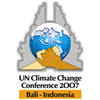The National Research Council (2001) concluded that there may be significant regional transitions associated with shifts in forest location and composition in the U.S. due to climate change. Climate change is likely to alter the geographic distribution of North American forests, including regionally important tree species, such as New England sugar maples and boreal forests in Alaska.
The effects of climate change on forests in the U.S. and other parts of the world will depend not only on climatic factors but also on stresses from pollution (e.g., acid rain); future trends in forest management practices, including fire control and demand for timber; and land-use change. It is difficult to separate the influence of climate change from these other pressures.
Climate change effects on forests are likely to include changes in forest health and productivity and changes in the geographic range of certain tree species. These effects can in turn alter timber production, outdoor recreational activities, water quality, wildlife and rates of carbon storage.
Climate Factors
In general, forests are sensitive to climatic variability and change. Climatic factors that influence forest health-temperature, rainfall, atmospheric levels of carbon dioxide (CO2) and other greenhouse gases and extreme weather and fire events—are changing and are expected to continue changing due to human activities.
The following climate factors are likely to play an important role in determining future forest conditions:
- Air temperature
- Precipitation amount and seasonal distribution
- Atmospheric CO2 concentrations
- Frequency and severity of wildfire events
- Climatic variability and the frequency and severity of extreme events
- Indirect effects on pollution levels such as tropospheric ozone
Temperature and Precipitation
Changes in temperature and precipitation are expected to change forest location, composition, and productivity. Climate change is likely to drive the migration of tree species ![]() , resulting in changes in the geographic distribution of forest types and new combinations of species within forests. In North America, many tree species may shift northward or to higher elevations. (IPCC, 2001)
, resulting in changes in the geographic distribution of forest types and new combinations of species within forests. In North America, many tree species may shift northward or to higher elevations. (IPCC, 2001)
The IPCC noted, "Some species do occupy sites that are on the limits of their physiological tolerance, and if climate change takes local climate beyond that threshold, clearly they will not be able to persist at that site. However, there is mounting paleoecological evidence of vegetation types persisting through significant climate changes."
Tree Growth and CO2 sequestration
 Free-Air CO2 Enrichment (FACE
Free-Air CO2 Enrichment (FACE ![]() ) experiments suggest that tree growth rates may increase with increasing levels of atmospheric CO2, but these effects are expected to saturate over time as tree communities adjust to increased CO2 levels.
) experiments suggest that tree growth rates may increase with increasing levels of atmospheric CO2, but these effects are expected to saturate over time as tree communities adjust to increased CO2 levels.
Climate change effects that influence tree growth will also alter rates of carbon storage (or sequestration) in trees and soils. Increased carbon sequestration would remove more CO2 from the atmosphere (a negative feedback that lessens climate change), whereas carbon losses through forest disturbances would result in more CO2 entering the atmosphere (a positive feedback that strengthens climate change).
Fire and Disease
Changes in forest disturbance regimes, such as fire or disease, could also affect the future of U.S. forests and the market for forest products, such as timber. Increased temperatures could increase fire risk ![]() in areas that become drier due to climate change. These changes could compound existing fire risks (IPCC, 2001). Climate change could also promote the rapid increase of diseases and pests that attack tree species. Such disturbances may be detrimental to forests themselves, but may have a lesser impact at the market level due to salvage operations that harvest timber from dying forests (Shugart, et al., 2003).
in areas that become drier due to climate change. These changes could compound existing fire risks (IPCC, 2001). Climate change could also promote the rapid increase of diseases and pests that attack tree species. Such disturbances may be detrimental to forests themselves, but may have a lesser impact at the market level due to salvage operations that harvest timber from dying forests (Shugart, et al., 2003).
Implications for North America
The IPCC concluded ![]() that, for North America as a whole (IPCC, 2001):
that, for North America as a whole (IPCC, 2001):
- Climate change is expected to increase the geographic range and productivity of forests over the next 50-100 years. However, extreme and/or long-term climate change scenarios also create the potential for widespread forest decline.
- Climate change is likely to cause changes in the nature and extent of several disturbance factors, such as fire and insect outbreaks. Of particular interest in North America are changes in fire regimes, including an earlier start to the fire season, and significant increases in the area experiencing high to extreme fire danger.
- The long-term effects of fire will depend heavily on changes in human fire management activities.
References
- IPCC, 2001: Climate Change 2001: Impacts, Adaptation, and Vulnerability.
 Contribution of Working Group II to the Third Assessment Report of the Intergovernmental Panel on Climate Change [McCarthy, James J., Canziani, Osvaldo F., Leary, Neil A., Dokken, David J., and White, Kasey S. (eds.)]. Cambridge University Press, Cambridge, United Kingdom and New York, NY, USA, 1032pp.
Contribution of Working Group II to the Third Assessment Report of the Intergovernmental Panel on Climate Change [McCarthy, James J., Canziani, Osvaldo F., Leary, Neil A., Dokken, David J., and White, Kasey S. (eds.)]. Cambridge University Press, Cambridge, United Kingdom and New York, NY, USA, 1032pp. - National Research Council (NRC), 2001. Climate Change Science: An Analysis of Some Key Questions.
 National Academy Press, Washington, DC
National Academy Press, Washington, DC - Shugart, Sedjo and Sohngen, 2003. Forests & Global Climate Change: Potential Impacts on U.S. Forest Resources (PDF, 64 pp., 1328 KB, About PDF)
 ). Pew Center for Climate Change.
). Pew Center for Climate Change.






No comments:
Post a Comment